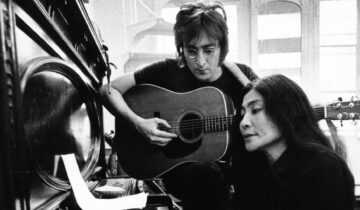Shining Spirit: Westheimer Family Collection was an exhibition of works given over four decades by the Westheimer Family. The exhibition showcaseed more than ninety works from this remarkable collection. With styles ranging from traditional to abstract, the exhibition spanned late nineteenth-century and twentieth-century American art as well as examples from both Europe and Latin America.
The exhibition of the Westheimer Family Collection included the 2004 bequest of sixty-eight paintings by the estate of the late Jerome M. Westheimer Sr. and his surviving wife, Wanda Otey Westheimer. Added to previous gifts of art and funds for museum purchases, the bequest was the single largest gift of art to the Museum and the largest named collection in its holdings. As such, Shining Spirit: Westheimer Family Collection paid homage not only to a museum leader and his family, but also to the most significant collection of modern-contemporary art in Oklahoma.
The exhibition was organized in six sections: Realism in Portraiture, 1960-1980; Fantasy and Humor; Realism and Photorealism; The Mystical and the Surreal; Optical Art and Geometric Abstraction; and Painterly Abstraction. This diverse exhibition flowed with a common theme of excellence, which is exemplified no where better than in its small introductory grouping of works by American artists Martin Johnson Heade, William Merritt Chase, John Marin, and Georgia O’Keeffe.
Featuring works primarily from the mid-1960s to 1970s, the first titled section, Realism in Portraiture, 1960-1980, explored a renewed interest in realism which began in the early 1960s with the work of artists such as Philip Pearlstein. The section included works by social realists Jack Levine and Moses Soyer, who were committed to realism throughout their careers. Additionally, works by Marisol, Larry Rivers, and Mel Ramos, as well as a portrait by Alice Neel, who came to prominence during this period, were featured.
The second section, Fantasy and Humor, explored the realm of the imagination with works by Alan Davie, Peter Paone, and Robert Beauchamp. Often highly colorful and expressive, the works of these artists are infused with overtones of the surreal and the fantastic. The section also included examples of satire and social commentary by artists including Charles Bragg, Roy Carruthers, and Dee J. Lafon.
The section Realism and Photorealism exhibited a fusion of various artistic influences from the mid-1960s to 1980s. It included works by prominent photorealists, including Don Eddy, Richard McLean, and Oklahoma native Carolyn Brady. A large portrait by pop artist Alex Katz and pop-inspired works by John Fincher and Donn Moulton were also included. The section also showcased a number of still lifes as well as depictions of flowers, including a large-scale painting by Lowell Nesbitt.
The fourth section included works that touch on the mystical and the surreal. Included were examples of magic realism by George Tooker and works by the Northwest Mystics Mark Tobey and Morris Graves. Latin American artists Rafael Coronel and Ricardo Martínez de Hoyos were represented, as well as landscape artists Sylvia Plimack Mangold and Rackstraw Downes.
The section Optical Art and Geometric Abstraction, predominantly from the 1960s and 1970s, included examples of op art by Victor Vasarely, Julian Stanczak, and Richard Anuszkiewicz and the influence of geometric abstraction in works by Charles Seliger and Deborah Remington. A portfolio of twelve intaglio prints by Terry Winters was an excellent grouping of works on display. Other artists in this section were Francisco Toledo, Jimmy Ernst, and Mimmo Paladino.
The final section, Painterly Abstraction, illustrated the gestural works of Sam Francis, Paul Jenkins, and Richard Pousette-Dart. Over fifty years of works by artists working in this style were represented. A Museum favorite, Frank Stella’s large metal sculpture The Spirit-Spout rounded out the exhibition and collection.
Exhibition was accompanied by a catalogue and audio tour.









